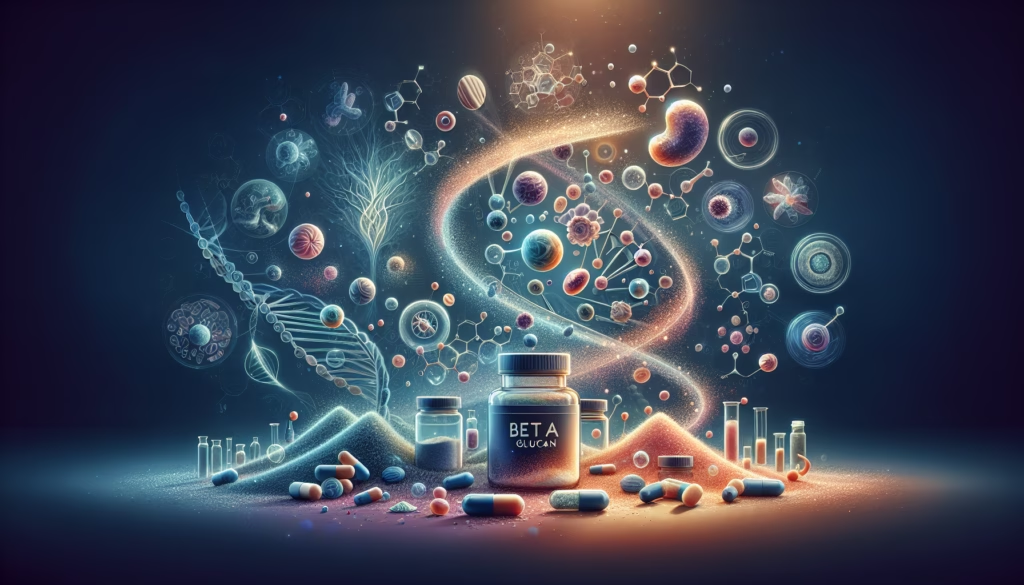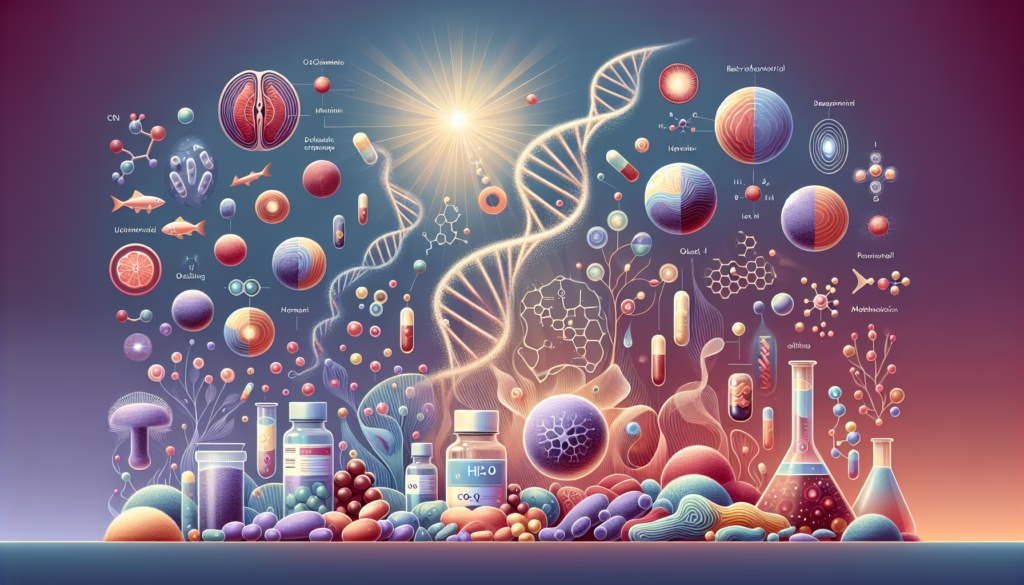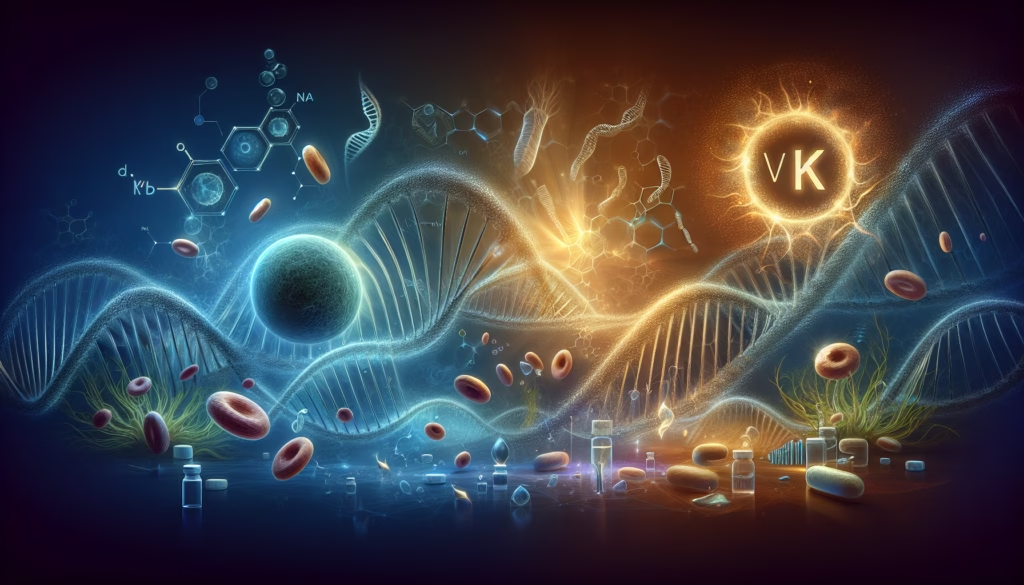
Beta Glucan
Discover the science-backed potential of beta glucan as an adjunct in cancer therapy. This post delves into the latest research
Click 
Selenium, an essential trace element, demonstrates significant potential in cancer prevention and treatment through its dual role in modulating oxidative stress and targeting cancer-specific pathways. Emerging research highlights its ability to enhance conventional therapies while protecting healthy cells, positioning selenium as a promising adjunct in metabolic and anti-cancer strategies.
Redox Modulation
Selenium exerts its effects by balancing antioxidant and pro-oxidant actions:
Antioxidant Protection: Selenoproteins like glutathione peroxidase (GPx) and thioredoxin reductase (TrxR) neutralise excess reactive oxygen species (ROS) in healthy cells, preventing DNA damage and carcinogenesis28.
Pro-Oxidant Cytotoxicity: In cancer cells, which inherently have elevated ROS levels, selenium compounds like sodium selenite selectively amplify oxidative stress, overwhelming their antioxidant defences and triggering apoptosis2812.
Apoptosis and Cell Cycle Arrest
Upregulates pro-apoptotic proteins (Bax, caspase-3) and suppresses anti-apoptotic Bcl-218.
Induces G1/S phase cell cycle arrest by increasing p21cip1 and p27kip1 expression, blocking uncontrolled proliferation28.
DNA Repair and Gene Regulation
Enhances DNA damage repair via selenoprotein-mediated ROS scavenging28.
Downregulates oncogenes (c-myc) and upregulates tumour suppressors (p53), inhibiting telomerase activity in cancer cells2812.
| Combination | Effect | Study Findings |
|---|---|---|
| Chemotherapy | Enhances drug efficacy while reducing toxicity | Sodium selenite boosts polyene paclitaxel’s effect on prostate cancer cells8. Selenocysteine synergises with 5-fluorouracil, increasing apoptosis via ERK pathway blockade8. |
| Radiation | Protects healthy tissues; sensitises tumours | Selenomethionine reduces DNA damage in normal cells exposed to cisplatin2. Nanoparticles enhance irinotecan’s killing effect in colorectal cancer8. |
| Targeted Therapies | Improves drug delivery and specificity | Methotrexate-loaded selenium nanostructures combined with radiation show 55% response rate in renal cell carcinoma59. |
Selenium Nanoparticles (SeNPs): Coated with bacterial exopolysaccharides (e.g., AZEPS-SeNPs), these exhibit:
Orthopaedic Implants: Selenium-coated titanium reduces cancerous bone cell activity by 50% while promoting healthy osteoblast function6.
Positive Outcomes:
Limitations:
Personalised Approaches: Targeting SECISBP2 to regulate selenoprotein expression may improve therapeutic selectivity7.
Metabolic Targeting: Exploiting selenium’s role in thiol depletion and angiogenesis inhibition to block metastasis11.
Selenium’s multifaceted anti-cancer properties, particularly when integrated with nanotechnology and combination therapies, offer a compelling avenue for metabolic oncology. While clinical translation requires further optimisation, current evidence underscores its potential to reshape cancer treatment paradigms.
Established safe dosage guidelines for selenium exist, with specific thresholds to balance efficacy and toxicity risks:
The daily intake varies by age and physiological state:
Adults 19+: 55 mcg
Pregnancy: 60 mcg
Breastfeeding: 70 mcg
Children:
Adults and adolescents 14+: 400 mcg/day
Children 9–13: 280 mcg/day235
Exceeding these limits increases risks of toxicity (hair loss, nausea, organ damage) and diabetes with prolonged use13.
While studies explore high-dose selenium (e.g., 200–7,200 mcg/day) for cancer therapy, these doses:
Require strict medical supervision due to severe toxicity risks (fatigue, diarrhoea, neuropathy)4.
Show mixed efficacy; some trials report enhanced chemotherapy effects at 7,200 mcg twice daily for 7 days, but safety is not established for general use4.
For public health recommendations, 55 mcg/day remains the standard RDA, with 400 mcg/day as the absolute safety ceiling for adults25.
Colorectal Cancer, Lung Cancer, Prostate Cancer
Selenium supplementation carries dose-dependent risks, with side effects ranging from mild discomfort to life-threatening toxicity.
Key considerations include:
Neurological crises: Tremors2, difficulty breathing6, ataxia5
Persistent effects: Memory loss5, mood changes5, nail loss5 (lasting ≥90 days post-exposure)
Skin cancer: Squamous cell carcinoma association in high-risk populations9
| Category | Dose | Risk Level |
|---|---|---|
| Safe upper limit (adults) | ≤400 mcg/day | Minimal side effects23 |
| Therapeutic anti-cancer* | 200–7,200 mcg | High toxicity risk17 |
| Acute toxicity | >40,000 mcg | Organ failure/death5 |
*Requires medical supervision due to narrow therapeutic window17.
Chemotherapy: May alter drug efficacy9
Statins/Corticosteroids: Potential synergistic toxicity9
Birth control: Unclear pharmacokinetic effects9
While selenium nanoparticles show targeted cytotoxicity in cancer cells (IC₅₀: 8.3–72.8 µg/mL)17, systemic formulations still risk collateral toxicity at elevated doses. Patients using Brazil nuts or supplements should monitor cumulative intake to stay below 400 mcg/day26.
Selenium has been extensively tested in combination therapies, demonstrating synergistic effects with chemotherapy, radiation, and targeted treatments across multiple cancer types while mitigating toxicity. Key findings include:
Platinum-Based Regimens:
Selenium yeast (200 µg/day) reduced nausea, appetite loss, and weight decline in platinum-treated patients, improving Karnofsky scores by 20%4.
Phase I trials of IV selenious acid (50–5,000 µg) with carboplatin/paclitaxel showed no pharmacokinetic interference and manageable toxicity (neutropenia: 66.6%) in ovarian/gynaecologic cancers36.
Taxanes:
Doses of 200–500 µg/day (as selenomethionine) improved radiotherapy tolerance:
Reduced mucositis and xerostomia in head/neck cancer patients.
Maintained plasma selenium levels during treatment without compromising efficacy5.
| Combination | Outcome | Cancer Type |
|---|---|---|
| Axitinib (VEGFR inhibitor) | 55% objective response rate (3 CR + 14 PR) in advanced kidney cancer | Renal cell carcinoma11 |
| PD98059 (MAPK inhibitor) | Synergistic tumour shrinkage in BRAF-mutant breast/melanoma cells | Breast, melanoma9 |
| Methotrexate | 55% response rate in renal cancer via selenium nanostructures + radiation | Renal cell carcinoma1 |
FA-SeNPs: Folic acid-coated selenium nanoparticles enhanced PD98059 uptake in FAR+ tumours, reducing spheroid size by 60%9.
Radiosensitisation: Nano-Se + radiotherapy inhibited NSCLC metastasis by 70% and doubled apoptosis rates via ROS amplification10.
HDAC Inhibition: The prodrug SeSA-DCA (selenium + dichloroacetate) outperformed standalone agents in prostate cancer, inducing apoptosis via CDC25A suppression1.
DNA Repair Blockade: Selenium downregulated RAD51AP1, sensitising ovarian tumours to carboplatin6.
Clinical data support selenium’s role as a chemo/radio-enhancer with a tolerable safety profile at ≤5,000 µg (IV) or 200–500 µg (oral). Ongoing trials explore sequential dosing and nanoparticle formulations to optimise therapeutic windows1112.
Selenium supplementation demonstrates measurable quality-of-life (QoL) improvements for cancer patients, particularly during active treatment and rehabilitation.
Key impacts supported by clinical evidence include:
Radiation Therapy:
Chemotherapy:
| Domain | Improvement | Dose/Duration |
|---|---|---|
| Physical Function | Enhanced energy levels and mobility post-rehab | 600 µg/day for 3 weeks |
| Emotional Health | Reduced anxiety/depression scores (EORTC QLQ-C30) | 300–600 µg/day sustained for 3 months |
| Global QoL | 30% increase in self-reported well-being | 200–500 µg/day during radiotherapy |
Immune Support: Sodium selenite (200 µg/day) enhances interleukin-2 receptor expression, improving cell-mediated immunity during radiation4.
Oxidative Balance: Normalises glutathione peroxidase (GPx) and superoxide dismutase (SOD) activity, reducing treatment-related fatigue24.
Optimal Range: 300–600 µg/day (higher doses more effective for deficiency correction)2.
Baseline Dependency: Patients with initial selenium <100 µg/L saw greater QoL gains (141.2 µg/L post-supplementation vs. 127.1 µg/L at lower doses)2.
Post-Rehab Sustainability: Patients maintaining selenium levels >130 µg/L retained QoL improvements for ≥3 months, while declining levels correlated with fatigue recurrence2.
Food vs. Supplements: Dietary selenium correlates with long-term cancer prevention, while supplements excel in acute symptom management during therapy35.
Radiation/Chemo Patients: 400–600 µg/day sodium selenite during treatment to mitigate toxicity.
Rehabilitation: Continue 300–600 µg/day for ≥3 months post-treatment to sustain functional gains.
Monitoring: Check whole-blood selenium levels monthly, targeting 120–150 µg/L for optimal QoL outcomes.
Selenium’s QoL benefits are most pronounced in patients with baseline deficiencies, emphasising the need for personalised dosing guided by biomarker testing.
We’ve done our best to include as much information as possible for this supplement.
If you have any other questions, please send us a message or join our Skool Group and ask our knowledgeable and friendly community.
Selenium supplements are readily available through multiple channels including pharmacies, health food stores, and online retailers. Regulatory status and accessibility may differ across countries.
Selenium’s efficacy in cancer management shows demographic variability influenced by baseline selenium levels, cancer type, sex, and genetic factors. Key determinants include:
Low-selenium populations: Benefit most from supplementation, with observational studies showing 24% lower cancer risk (OR: 0.76)5.
Adequate-selenium regions: No significant risk reduction in RCTs (RR: 1.01 for cancer incidence)4.
| Cancer Type | Effect | Evidence |
|---|---|---|
| Breast | Lower mortality with higher pre-diagnosis intake (HR: 0.69)1, but no benefit in populations with adequate baseline levels4. | Polish cohort: 10-year mortality risk doubled with low serum selenium1. |
| Renal Cell | Non-sarcomatoid morphology: 62% response rate to selenomethionine + axitinib vs. 20% in sarcomatoid3. | Phase I/II trial: mPFS 17.1 months vs. 9.92 months overall3. |
| Colorectal | Dose-dependent reduction in aberrant crypt foci (β = -0.34 per µg/day)1. | Rat studies: Higher dietary selenium reduced ACF by 50%1. |
Men: Observational data suggest stronger protective effects (OR: 0.72 vs. women’s 0.90)4.
Women: Mixed results in breast cancer trials; selenium from food reduces risk, but supplements show no benefit12.
Selenoprotein H (SELH): Knockout accelerates cancer cell cycles; high SELH expression inhibits proliferation (G1/S arrest)1.
p53 Status: Selenium protects wild-type p53 cells from platinum drug toxicity but not p53-deficient cells1.
Food-derived selenium correlates with reduced breast, lung, and colorectal cancers (OR: 0.75)5.
Supplements lack preventive efficacy but improve radiotherapy tolerance (e.g., 40% reduction in radiation-induced diarrhoea)2.
Europe/Asia: Greater benefit in regions with lower baseline selenium (e.g., Poland, Sweden)15.
North America: Limited impact in selenium-replete populations4.
Target low-selenium patients with specific cancers (renal, breast, colorectal).
Prioritise dietary selenium for prevention and supplements as chemo/radio-adjuvants.
Screen for SELH expression and p53 status to personalise therapy.
Current evidence supports stratified approaches rather than universal application, emphasising the need for biomarker-guided trials.
Emerging research identifies several resistance mechanisms that can limit selenium’s anti-cancer efficacy, along with strategies to counter them through targeted interventions:
Nrf2/Prx1 Pathway: Cancer cells overexpress nuclear factor erythroid 2-related factor 2 (Nrf2) and peroxiredoxin 1 (Prx1) to detoxify chemotherapeutic agents. Selenium suppresses these pathways, reversing resistance to irinotecan and platinum drugs47.
Thioredoxin Reductase (TR): Radiation-resistant NSCLC cells upregulate TR to neutralise reactive oxygen species (ROS). Ethaselen, a TR inhibitor, overcomes radioresistance by blocking NF-κB activation (IC₅₀: 5 µM)5.
Akt/mTOR Signalling: Trastuzumab-resistant breast cancer cells (JIMT-1) exhibit hyperactive Akt/mTOR signalling. Sodium selenite (10 µM) downregulates phosphorylated Akt (p-Akt) and synergises with trastuzumab, reducing viability by 60%6.
HIF-1α/2α Stabilisation: Hypoxia-induced resistance in renal and head/neck cancers is reversed by selenomethionine (0.2 mg/mouse/day), which destabilises HIF proteins and enhances drug delivery47.
Beclin-1 Overexpression: Selenium inhibits autophagy in trastuzumab-resistant breast cancer by downregulating beclin-1, shifting cells toward apoptosis. Combined treatment reduces JIMT-1 spheroid growth by 40%6.
ABC Transporter Overactivity: Selenium nanoparticles (SeNPs) bypass P-glycoprotein-mediated drug efflux in glioblastoma, restoring sorafenib sensitivity at nanomolar concentrations3.
CYP450 Detoxification: High-dose selenocysteine (10 mg/g body weight/day) inhibits cytochrome P450 enzymes, prolonging paclitaxel retention in prostate cancer models8.
SECISBP2 Dysregulation: Reduced SECISBP2 expression impairs selenoprotein synthesis, diminishing selenium’s pro-apoptotic effects. Restoring SECISBP2 enhances selenite efficacy in colorectal cancer1.
Oncogenic miRNA Overexpression: Selenium downregulates miR-21 and miR-155, which drive resistance to axitinib in renal cell carcinoma4.
| Resistance Mechanism | Selenium Intervention | Outcome |
|---|---|---|
| HIF-α stabilisation | Selenomethionine (4,000 µg/day) | 55% response rate in renal cancer when combined with axitinib4 |
| Akt/mTOR hyperactivation | Sodium selenite (5–10 µM) | Synergy with trastuzumab reduces JIMT-1 viability by 60%6 |
| Autophagy upregulation | SeNPs + chloroquine | Doubles apoptosis in glioblastoma via ER stress3 |
| Nrf2-mediated detoxification | Methylselenocysteine (10 mg/kg) pre-treatment | Enables 4× irinotecan dose escalation in colon cancer models7 |
Biomarker-Guided Dosing: Tumours with low SECISBP2 or high HIF-1α may require ≥7,200 µg/day selenium to overcome resistance14.
Sequential Scheduling: Administering selenium 7 days before chemotherapy maximises HIF/Nrf2 suppression and minimises toxicity7.
Selenium’s ability to modulate redox balance, survival pathways, and epigenetic drivers positions it as a versatile adjuvant to counteract therapeutic resistance. However, efficacy depends on tumour-specific molecular profiles and optimised dosing regimens.
Selenium’s preclinical studies demonstrate promising anti-cancer mechanisms and synergistic potential with conventional therapies, supported by diverse in vitro and in vivo models. Key findings include:
HDAC Inhibition: The prodrug SeSA-DCA (selenium + dichloroacetate) outperformed standalone agents in prostate cancer models, inducing apoptosis via CDC25A suppression. Oral administration caused significant tumour regression in mice without toxicity1.
Chemotherapy Synergy:
| Type | Mechanism | Model | Outcome |
|---|---|---|---|
| Biogenic SeNPs | Induced immunogenic cell death via calreticulin exposure and HMGB1 release | CT26 mouse colon cancer | Suppressed tumour growth (oral administration) and enhanced macrophage phagocytosis2. |
| Fucoidan-coated SeNPs | Apoptosis via ROS generation and caspase-3 activation | In vitro colon cancer | IC₅₀: 8.3–72.8 µg/mL, with minimal toxicity to normal cells6. |
| Polysaccharide-Se | Mitochondrial apoptosis (Bax/Bcl-2 modulation, cytochrome C release) | A549 lung cancer | Reduced tumour volume by 70% in xenografts7. |
Colon Cancer: Lactobacillus-derived SeNPs triggered caspase-3 activation and upregulated ICD biomarkers (ATP, ERp57) in HT29 and CT26 cells2.
Prostate Cancer: SeSA-DCA promoted G1/S arrest and apoptosis via p21cip1 upregulation and c-myc suppression1.
Inflammation-Driven Models: Dietary selenium reduced DMH/DSS-induced colon tumours in APN-knockout mice by normalising Muc-2 and Math-1 expression8.
Tumour Regression:
Metastasis Inhibition: Nano-Se + radiation blocked NSCLC metastasis by 70% via ROS amplification10.
Dose Dependency:
Toxicity Threshold: Selenite induced neurotoxicity at ≥10 µM, while SeNPs remained safe up to 50 µg/mL47.
Preclinical evidence supports selenium’s role as a multifaceted anti-cancer agent, particularly in nanoparticle forms and combination regimens. However, efficacy and safety are highly dependent on formulation, dosing, and tumour type.
For an up-to-date list of active clinical trials investigating selenium in cancer treatment, visit ClinicalTrials.gov.
Genetic markers influencing selenium’s anti-cancer efficacy have been identified, primarily involving selenoprotein polymorphisms and expression levels. Key findings include:
rs3877899 (Ala234Thr):
rs7579 (3′ UTR SECIS):
rs5845 (C/T) and rs5859 (G/A):
Pro/Leu polymorphism:
Leu allele reduces enzyme activity responsiveness to selenium, diminishing protective effects against oxidative DNA damage in breast cancer models3.
Knockout effects: Accelerates G1/S phase transition in colorectal cancer cells, counteracting selenium’s cell cycle arrest effects1.
| Population | Marker | Impact |
|---|---|---|
| European | SELENOP rs3877899 | 24% lower breast cancer risk in Thr homozygotes23. |
| African American | SELENOF rs5859 | 36% higher prostate cancer mortality in AA genotype carriers2. |
| Asian | GPx-1 Pro198Leu | Reduced antioxidant protection in Leu carriers exposed to low selenium3. |
DNA Repair Modulation: Wild-type p53 status enhances selenium’s DNA repair effects (e.g., 10 μmol/L selenomethionine reduces cisplatin-induced damage in p53 WT cells)1.
Oncogene Regulation: Sodium selenite suppresses c-myc and upregulates p53, inhibiting telomerase activity in stem cells1.
Screening: SELENOP and SELENOF genotyping may stratify patients for selenium-based therapies.
Combination Strategies: SELENOH-high tumours may benefit from selenium’s G1/S phase arrest, while GPx-1 Leu carriers require higher doses for efficacy13.
These genetic markers highlight selenium’s context-dependent efficacy, emphasising the need for personalised approaches based on selenoprotein profiles and ancestry.

Discover the science-backed potential of beta glucan as an adjunct in cancer therapy. This post delves into the latest research

Explore the emerging world of hydrogen gas (H₂), also known as Brown Gas, and its remarkable potential as an adjunct

Explore the latest scientific insights into vitamin K2 and its promising role in cancer therapy. In this comprehensive blog post,
Apoptosis, or programmed cell death, is a natural process where cells self-destruct when they are damaged or no longer needed. This is crucial for maintaining healthy tissues and preventing diseases like cancer.
Drugs and supplements that induce apoptosis help eliminate cancerous cells by triggering this self-destruct mechanism, ensuring that harmful cells are removed without damaging surrounding healthy tissue.
Understanding and harnessing apoptosis is vital in the fight against cancer, as it targets the root cause of the disease at the cellular level.
Cell proliferation is the process by which cells grow and divide to produce more cells. While this is essential for growth and healing, uncontrolled cell proliferation can lead to cancer.
Drugs and supplements that inhibit cell proliferation help prevent the rapid multiplication of cancerous cells, slowing down or stopping the progression of the disease.
By targeting the mechanisms that drive cell division, these treatments play a vital role in controlling and potentially eradicating cancer.
Cancer cells often hijack specific biological pathways to grow and spread. Drugs and supplements that target these pathways can disrupt the cancer cell’s ability to survive and multiply.
By focusing on the unique mechanisms that cancer cells use, these treatments can be more effective and cause fewer side effects compared to traditional therapies.
Targeting specific pathways is a key strategy in precision medicine, offering a tailored approach to combat cancer at its core.
Angiogenesis is the process by which new blood vessels form, supplying nutrients and oxygen to tissues. Cancer cells exploit this process to fuel their growth and spread.
Drugs and supplements that inhibit angiogenesis can effectively starve cancer cells by blocking the formation of these new blood vessels.
By cutting off the supply lines that tumors rely on, angiogenesis inhibitors play a crucial role in controlling and potentially shrinking cancerous growths.
Immunotherapy harnesses the power of the body’s immune system to combat cancer. By boosting or restoring the immune system’s natural ability to detect and destroy cancer cells, immunotherapy offers a targeted and effective approach to treatment.
Drugs and supplements that support immunotherapy can enhance the immune response, making it more efficient at identifying and attacking cancer cells.
This innovative approach not only helps in treating cancer but also reduces the risk of recurrence, providing a powerful tool in the fight against this disease.
Inflammation is the body’s natural response to injury or infection, but chronic inflammation can contribute to the development and progression of cancer.
Drugs and supplements with anti-inflammatory properties help reduce inflammation, thereby lowering the risk of cancer and other chronic diseases.
By targeting the inflammatory processes, these treatments can help maintain a healthier cellular environment and prevent the conditions that allow cancer to thrive.